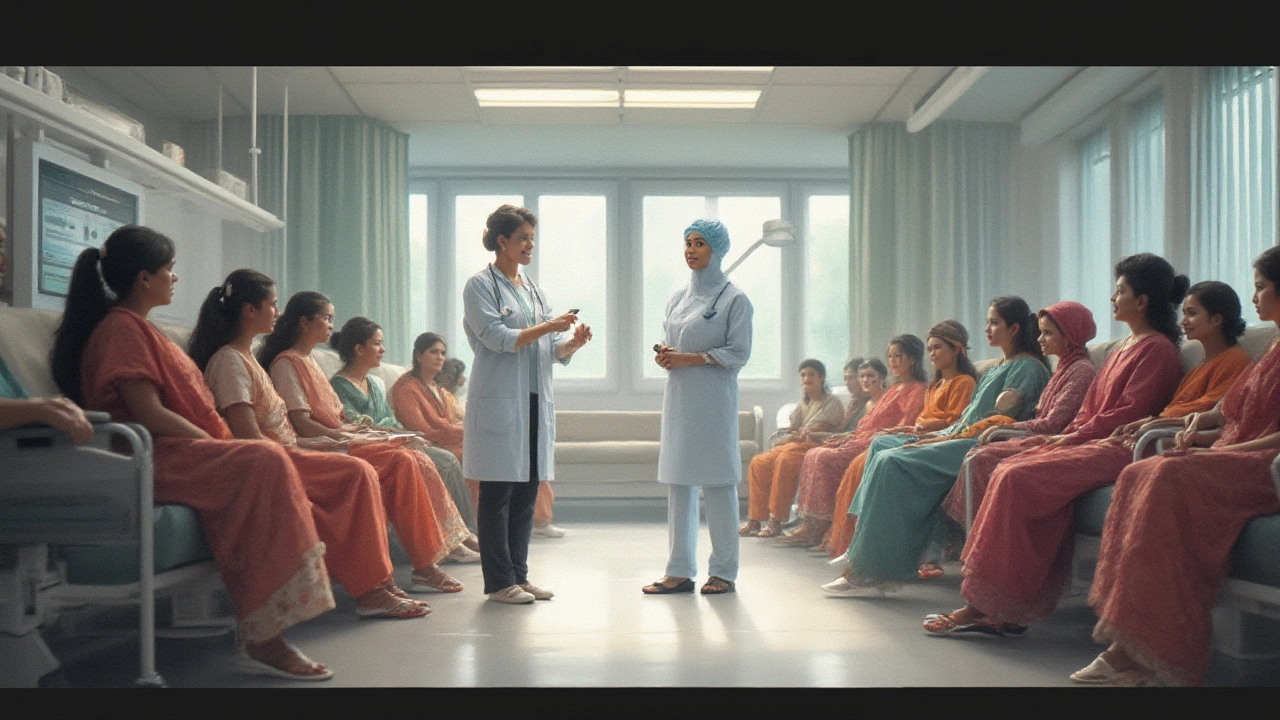Picture walking into a hospital and feeling truly safe, not just hopeful that things will go well, but knowing your care team uses every tool and strategy out there to keep preventable harm out of your patient journey. That’s not a fantasy. In Canada, this has been the driving force behind Safer Healthcare Now – an initiative that changed the way health professionals, leaders, and entire organizations treat quality and safety in the country’s healthcare system. Its story starts with a bold question: Why should any patient suffer harm we know how to prevent?
The Roots and Goals of Safer Healthcare Now
Safer Healthcare Now kicked off in 2005, an answer to several shocking truths about medical errors and preventable harm in Canadian healthcare settings. Up until the early 2000s, the world more or less tolerated that mistakes would happen in busy hospitals. But studies—real, jaw-dropping studies—began to show just how risky healthcare could be. For example, a Canadian Institute for Health Information (CIHI) report from 2004 highlighted that preventable adverse events in hospitals were one of the leading causes of death. The numbers were hard to ignore: roughly 7.5% of hospitalized patients experienced at least one adverse event, and about 37% of these could have been avoided. That translated to 9,000 premature deaths per year—more than car accidents and breast cancer combined.
So, Safer Healthcare Now didn’t just nudge improvements; it went in with a mission to bring that number down. At its heart, the initiative focused on bundles—‘bundles’ are really just groups of best practices, proven by data, that, when used together by health teams, can drive down the risks of harm much more than any single action alone.
Imagine you’re building a safety checklist for your own routine, like making sure the dog’s leash is attached, gate locked, and treat bag ready before heading out with Bruno (my tireless Labrador). That’s basically what these clinical bundles do, only for serious risks like central line infections or medication errors in hospital settings.
The original launch was backed by the Canadian Patient Safety Institute (CPSI), working hand-in-hand with healthcare pros from coast to coast. Hospitals of every size could participate, whether a big city ICU or a small rural surgery suite. There were starter kits, data collection tools, and access to other teams tackling the same challenges. It didn’t matter if you wore a stethoscope or managed supply closets—everyone’s buy-in was crucial. This team spirit, rooted in local ownership but fueled by national learning, has stuck with Safer Healthcare Now ever since.
But the biggest goal? Reduce the number of patients who suffer from things like healthcare-associated infections, falls, pressure ulcers, and medication errors—these are not rare, occasional flukes, but everyday risks that take real lives if left unchecked.

The Key Bundles and Tools Driving Change
Now here’s where things get practical—what did Safer Healthcare Now actually set in motion? The answer is dozens of evidence-based bundles, supported by measurement tools, coaching, and regular feedback. Whether it’s hand hygiene, proper patient identification, or using antibiotics smartly, the focus has been on strategies that work in busy, real-world wards.
Some of the best-known interventions were based on giants like the Institute for Healthcare Improvement’s (IHI) 100,000 Lives Campaign, but adapted to Canadian context. These included:
- Preventing central line-associated bloodstream infections (CLABSI) in ICUs using a strict five-part bundle—hand hygiene, full barrier precautions, cleaning skin with chlorhexidine, avoiding the femoral site, and removing unnecessary lines. Hospitals could measure their CLABSI rates, compare benchmarks, and share what worked.
- Reducing surgical site infections by following a timed bundle before, during, and after operations, like monitoring blood sugar, keeping body temperature up, and giving the right antibiotics at the ideal time.
- Minimizing ventilator-associated pneumonia by elevating head-of-bed, having daily sedation vacations, and checking readiness to wean off machines.
- Implementing medication reconciliation to prevent mix-ups whenever a patient moves between care settings. This is basically making sure someone’s medication list is always up-to-date, accurate, and checked by a team that actually talks to each other—that step alone has probably saved thousands from dangerous prescribing errors.
Hospitals weren’t just handed instructions and left alone, either. They got support for data collection, coaching on culture change (getting every team member to own safety), and access to a network for learning and troubleshooting. Sharing was a huge part of the philosophy: mistakes weren’t secrets, but learning opportunities. You can’t fix what you don’t acknowledge.
Here’s a glimpse at what these bundles looked like in cold, hard numbers. The impact is easy to see when you look at data before and after implementation:
| Intervention Area | Pre-Implementation (Incidents per 1,000 Patient-Days) | Post-Implementation (Incidents per 1,000 Patient-Days) |
|---|---|---|
| CLABSI (Intensive Care) | 5.3 | 1.1 |
| Surgical Site Infection | 2.9 | 1.2 |
| Ventilator-Associated Pneumonia | 6.5 | 2.3 |
| Pressure Ulcers | 10.0 | 4.2 |
You can see actual risk just dropping, not because patients changed, but because practices did. People sometimes assume that change in hospitals is all about fancy technology. The reality? Simple, consistent habits, stacked together, end up moving the needle the most.
Even outside acute hospitals, long-term care facilities and community settings joined in. They tackled issues like falls and infections. Some of the best learning came from failures, too. Nurses, doctors, and even cleaners held debriefs after incidents, rewrote routines, and tried again. Feedback loops, measuring small wins, and celebrating incremental improvements became baked into the daily life of these organizations.
Safer Healthcare Now also helped create the measurement culture in healthcare—getting people comfortable not just with tracking incidents, but making that data public (anxiety-inducing at first!) so teams could compete and learn together. It made safety everyone’s business, not just something for quality officers or risk managers lurking in the background.

Long-Term Lessons and What Still Needs Fixing
No initiative stays the same forever. After years of steady improvement, Safer Healthcare Now helped build the current Canadian Patient Safety Institute (now under Healthcare Excellence Canada), but the core ideas haven’t faded: transparency, teamwork, measurement, and patient-first thinking. That said, the work is far from over—the landscape keeps shifting, and new challenges pop up.
Here are a few lessons from the trenches. First, culture eats policy for breakfast. You can have the smartest protocols, but if people don’t trust leadership or feel unsafe speaking up, corners get cut. It turns out that real change kicked in when organizations created psychological safety—physicians, nurses, even cleaning staff could point out problems or near-misses without fearing blame or career damage.
Second, involving patients and families changed the game. Some hospitals started bedside safety huddles, inviting patients (and their families) to bring up concerns—think double-checking allergies or medication changes. It’s awkward at first, yes. But those moments catch little oversights before they turn into big injuries.
Safer Healthcare Now also proved that publishing data—warts and all—works. Hospitals used public dashboards to show progress. Some even let competing teams compare hand hygiene rates. When you can actually see your progress, it’s harder to ignore slipping standards or celebrate empty wins. That competitive, transparent spirit built pride, but also accountability.
Where do we still struggle? Well, healthcare is huge and complicated. Old habits die hard, hiring is tough in rural and remote regions, and underfunding never helps. Plus, digital records that are supposed to make everything easier sometimes create their own risks (wrong clicks, alert fatigue, you name it). The sheer burnout after the COVID-19 waves also put staff safety at the center of patient safety—tired, stressed teams make more mistakes, and that’s true everywhere.
Tips for anyone working in or around healthcare (maybe you have a family member in the system, or you’re there yourself):
- Speak up, even if it feels uncomfortable, if something feels off about your care or a loved one’s care.
- Ask how your care team checks for safety—is there a checklist, double-sign-off for meds, or a routine to follow?
- If you work in healthcare, make your unit’s data visible, celebrate small wins, and debrief openly about what went wrong (skip blaming, focus on fixing).
- Push for patient and family involvement in daily safety huddles; two sets of eyes always spot more than one.
- Remember, technology is helpful, but human habits—regular handwashing beats fancy gadgets every day of the week.
Safer Healthcare Now reshaped how Canadians think about hospital safety. If you look for the best outcomes in any hospital—from Vancouver to St. John’s—chances are their staff are using habits refined by this movement. The data tells a powerful story: fewer infections, fewer pressure ulcers, fewer patients harmed by errors that were once shrugged off as ‘unavoidable.’
For the thousands of families spared the pain of preventable harm, or the nurse who goes home feeling proud after a safe shift, this stuff isn’t abstract policy. It’s day-to-day, life-changing reality—all built on the hard, honest work of digging into mistakes, learning, and always asking, "How can we do better tomorrow?"

